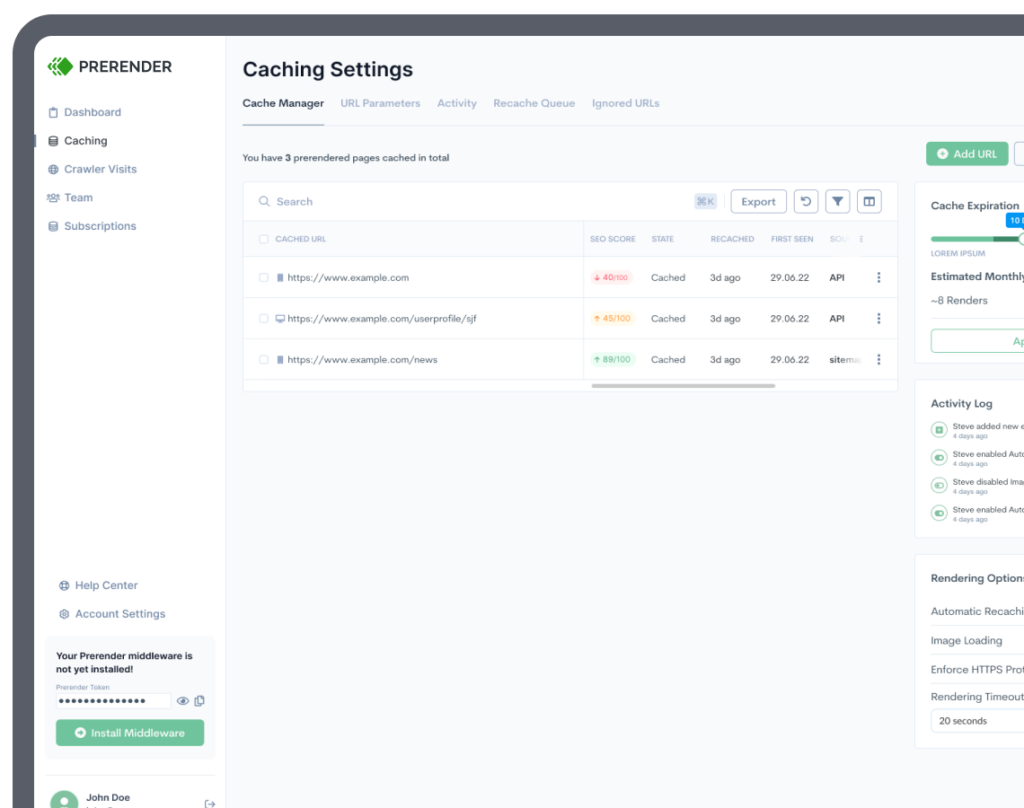Prerendering JS Frameworks
JavaScript creates the exciting experiences your customers love. Unfortunately, Googlebot and other crawlers don’t feel the same. With Prerender, you can translate your JavaScript to plain HTML to make search engines happier, increasing your organic SEO performance.
JS Frameworks
Two things are necessary to succeed online: user experience and visibility.
It’s no surprise that JavaScript frameworks allow you to build interactive web pages that engage and convert visitors into customers, but search engines struggle to read and understand dynamic pages. This results in half-indexed pages, low-performance scores, and poor results from your SEO efforts.
By using Prerender, you don’t need to choose between user experience or performance. No matter the framework or technology you use, your pages get a spot in search results. Install Prerender and see the difference in days!
Google needs to add an extra rendering step to its process to get your JS pages indexed.
Prerender takes care of this step by serving search engines a ready-to-index snapshot of your page, speeding up the indexing process from day one.
JavaScript creates bottlenecks that dramatically slow your pages down, especially on mobile devices. Prerender serves fully-rendered, functional HTML versions of your pages to search engines. (This way, all elements are completely loaded (LCP), making the page completely stable (CLS) and interactive (FID), boosting CWVs to near perfect.)
Page speed is an important technical SEO ranking factor, and it has a big influence on user experience. Still, these customers and search engines experience page speed differently. While client-side rendering works wonders for customers, it makes your content invisible to search engines.
Prerender takes 0.05 seconds on average to deliver your content to search engines and allows you to choose the best client-rendering technique.
To keep your content fresh and up to date. Prerender will create new snapshots every so often (based on your change frequency) and replace the old versions with the new content. (This ensures search engines always have the most up-to-date version of your page.)
You don’t need to rebuild your site. No matter what js framework you’re using or what technology you built your backend with, Prerender is here to help.
With over 1 million pages within the US and another 500,000 in Canada, Prerender® helps our sites get crawled faster, and helps with our visibility for potential clients on search engines. Choose Prerender to aid with issues rendering your web pages.
Donald O’Connor
Technical SEO Analyst

User experience and SEO can finally work together!
